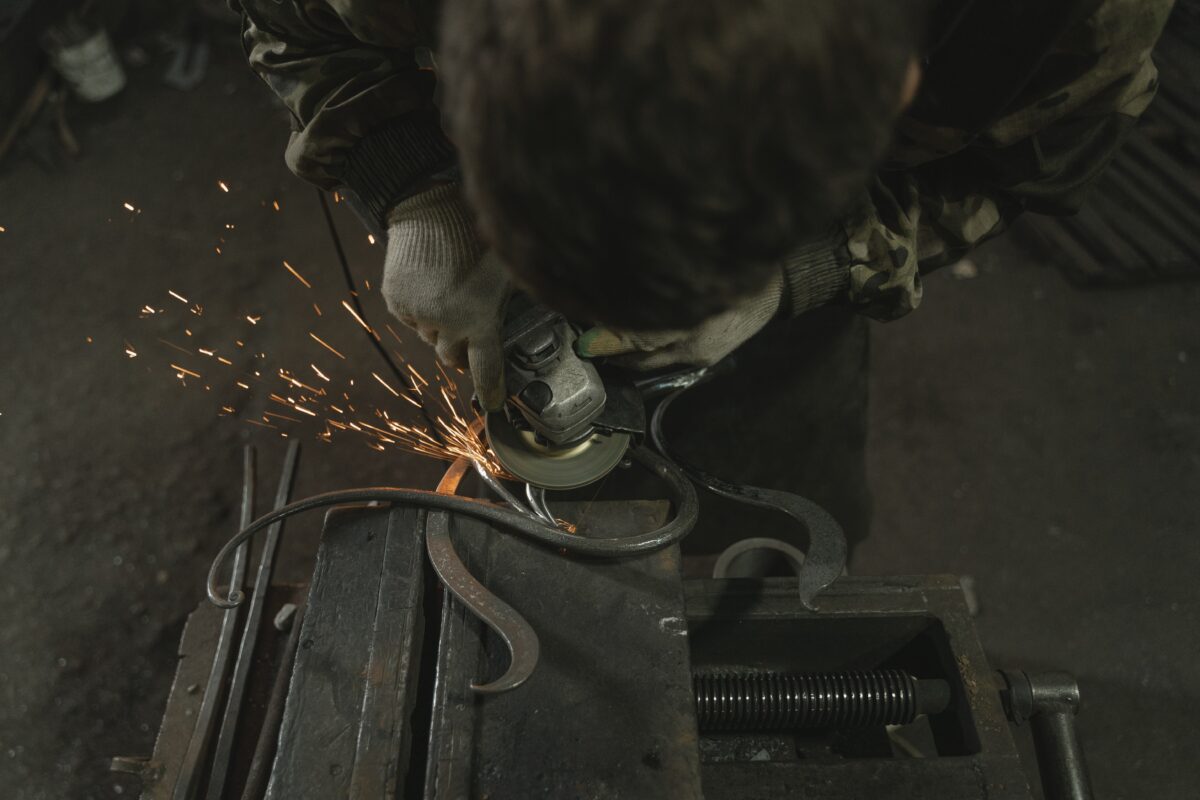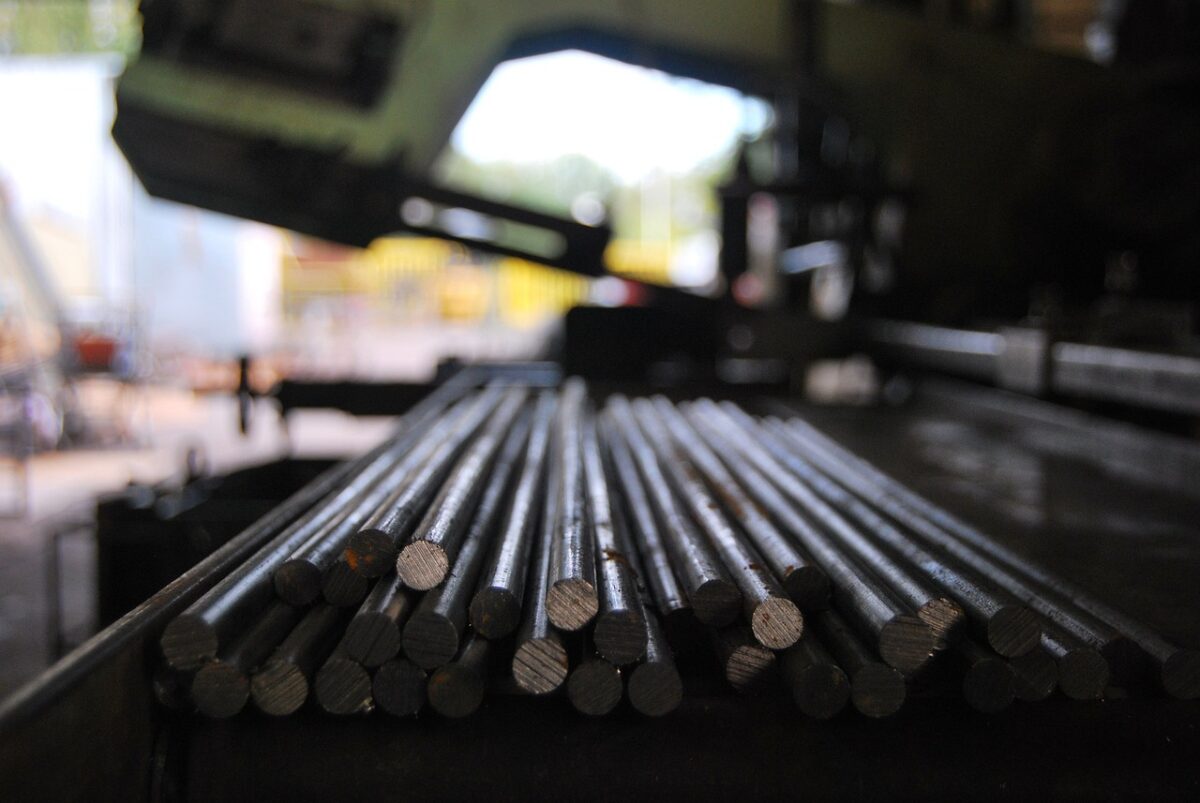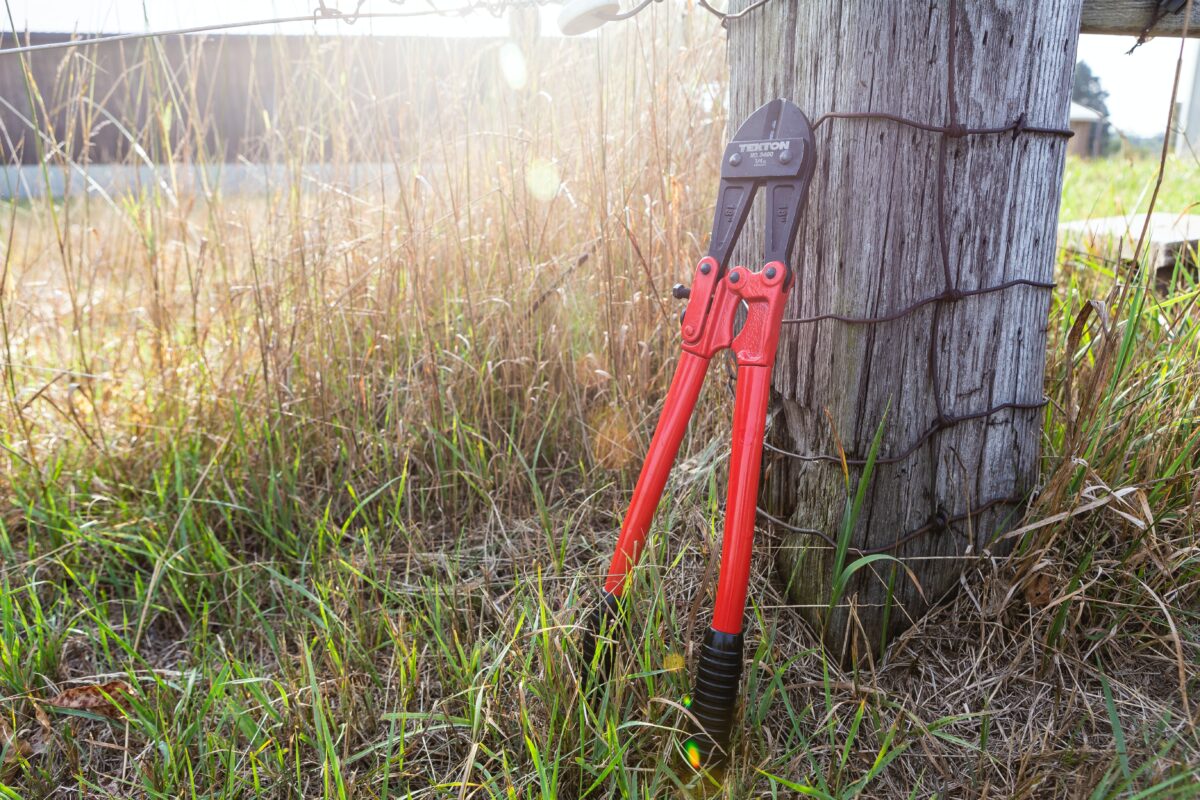Most homeowners without access to hacksaws or other saws may find cutting metal rods difficult. I have faced this dilemma many times for metalwork and home improvement projects. Without the right tools, cutting metal precisely and safely is hard.
Here, I will share with you the best and safest methods I have discovered over the years on how to cut a metal rod without a saw.
How to Cut a Metal Rod Without a Saw
An angle grinder, aviation snips, a mill file, and a bolt cutter can do the job when a saw is unavailable. However, you need to choose the right tool depending on the rod’s thickness. You should also consider if the tool can successfully cut according to your required size, angle, or length.
Many common household tools can serve as alternatives to specialized saws. Some tools better suit particular situations. Regardless, they are good options when you don’t have access to power saws in cutting rods.
Cutting Metal Rods With an Angle Grinder
Angle grinders with cut-off wheels are among the best power equipment for chopping metal bars. To use an angle grinder to chop metal, follow these instructions:

- Before you begin, prioritize safety by wearing personal protective equipment, including safety glasses, gloves, and ear protection.
- Choose a cutting disc specifically designed for metal cutting. Use a scribe to mark the desired trim line on the metal bar.
- Place the metallic rod on a stable surface or secure it in a vise to prevent movement during cutting.
- Hold the angle grinder with both hands, positioning the cutting disc perpendicular to the marked trim line on the metal stick.
- Start it and allow the disc to reach its full speed before making contact with the metallic rod. Slowly guide the rotating disc along the marked trim line, applying gentle pressure to initiate the cut.
- Continue guiding it along the trim line, maintaining a steady cutting motion. If needed, pause periodically to allow the disc to cool down and minimize the risk of overheating.
- Continue cutting until you chop off the metal stick along the marked trim line.
An angle grinder can cut through materials up to an inch thick, including threaded rods, tubing, and more. This is also why angle grinders are among my alternatives when cutting bricks in half without a saw.
Cutting Metal Rods With Aviation Snips
Also called tin snips, aviation snips are handy for cutting thin metal bars and sheets up to 16 gauge steel. Their compound leverage design allows efficient hand cutting. Follow these steps to use aviation snips to trim metal bars:

- Select the appropriate snips based on the thickness and type of metallic rod you intend to cut.
- Ensure you have a clean and well-organized work area before you begin.
- Use a scribe to mark the desired chop line on the metal bar.
- Open the jaws of the aviation snips and position them around the metallic rod, aligning them with the marked chop line.
- Grip the handles of the aviation snips, positioning your dominant hand on the upper handle and your other hand on the lower handle. Apply steady pressure and squeeze the handles together to initiate the cut.
- Maintaining a steady cutting motion along the marked chop line to achieve clean and precise cuts. Use smooth and controlled movements, allowing the snips to do the work while guiding them along the desired path.
- Continue applying pressure and cutting along the marked line until completely severed the metal bar.
Aviation snips work well for cutting rods up to 1/8-inch in diameter for steel and 3/16-inch for softer metals like aluminum. It can also be a substitute even to cutting a wooden dowel without a saw.
Cutting Metal Rods With a Mill File
Using a mill file to chop metal bars is not the most efficient or effective method. Mill files are primarily designed to shape and smooth metal surfaces rather than cut through them.
However, if you do not have access to more appropriate cutting tools, you can still attempt to use a mill file for chopping metal sticks with caution and also cutting steel without a saw. Here is how you can do it:
- Select a mill file with a coarse or medium-cut pattern. A bastard-cut or second-cut file would be suitable for chopping metal sticks.
- Use a marker or scribe to mark the desired cut line on the metallic rod. This will provide guidance when using the file.
- Secure the metal bar in a vise or clamp to keep it stable during cutting.
- Hold the file with both hands, aligning it with the marked cut line on the metallic rod. Ensure the file is positioned at the appropriate angle to achieve a cutting motion.
- Apply firm and consistent pressure on the file while pushing it forward along the marked cut line. Use long, smooth strokes rather than short, rapid movements.
- Continuously file along the cut line, repeating the filing process until you have made a significant groove in the metal bar.
- Once you have made a deep groove in the metal rod, you may be able to snap or break the rod by bending it back and forth at the cut line. Alternatively, you can continue filing until you completely cut through the rod.
Remember to use caution when trimming metal sticks using a mill file because it needs more physical work and could take longer than specialized cutting tools. Be careful when handling the file’s teeth as well because they can be sharp and result in harm if handled improperly.
Cutting Metal Rods With a Bolt Cutter
With its robust construction and sharp jaws, a bolt cutter provides a practical solution for quickly severing metal bars. Their long handles allow you to generate immense cutting force. Follow these steps to use bolt cutters to chop metal rods:

- Before starting, ensure you have a clear and well-lit work area. Remove any clutter that may interfere with your movements and ensure enough space to maneuver the bolt cutter effectively.
- Use a marker or scribe to mark the desired cut line on the metallic rod. This will serve as a visual guide, helping you achieve accurate cuts.
- Open the jaws of the bolt cutter and position them around the metal stick, aligning them with the identified cut line.
- Squeeze the handles of the bolt cutter with both hands, applying steady pressure to the metal rod. The sharp jaws of the cutter will bite into the metal, gradually severing it as you continue to exert force. Ensure a steady grip and consistent pressure throughout the cutting process.
- Continue squeezing the handles of the bolt cutter until you have cut through the metal stick completely. Depending on the thickness of metal rods, they may require multiple squeezes to achieve a clean cut.
Using a bolt cutter for trimming metal rods offers several advantages. Its strong and durable jaws are specifically designed to cut through various metals efficiently. So it will be just easy to use on cutting hockey stick without a saw.
Related Questions
Can You Chop Metal Rods With Hand Tools?
Yes, you can chop metal with hand tools. While power tools like angle grinders are chiefly used for trimming metal, several hand tools can cut through metal as well. Here are some of the most used metal-cutting tools: hacksaws, bolt cutters, tin snips, and hand shears.
How Do You Cut Metal Rods at Home?
You can use power saws to cut metal rods at home. However, if you don’t have any type of saw available, you can use an angle grinder, aviation snips, a mill file, or a bolt cutter instead.
What Can Cut Through a Metal Rod?
Tools like an angle grinder, bandsaw, circular saw, plasma cutter, and waterjet cutting machine can cut through metal rods easily. The choice of tool depends on multiple factors, such as precision requirements and the availability of equipment.
Conclusion
Cutting a metal rod without a saw may require resourcefulness and adaptability, although it is possible with the proper techniques and tools like cutting fire bricks without a saw. You can confidently tackle your metal cutting tasks by exploring alternative options like an angle grinder or employing innovative ones like bolt cutters and files.
